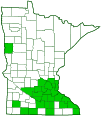lance-leaf fog-fruit
(Phyla lanceolata)
Conservation • Wetland • Description • Habitat • Ecology • Use • Distribution • Taxonomy
Description |
||
Lance-leaf fog-fruit is a prostrate, perennial forb that rises on a few to several stems from an extensive, somewhat woody, often-branched rootstock and sometimes from a creeping underground stem (rhizome). It usually forms a dense mat. The stems are weak and creep along the ground, sometimes loosely ascending at the tip (decumbent). They are are 8″ to 36″ long, slender, often branched, and sparsely to moderately covered with branched, appressed hairs. They are moderately 4-angled when young, becoming nearly round at maturity. The nodes are 1¼″ to 4″ apart and usually root if they touch the ground. The branches are decumbent to erect and 6″ to 20″ long. The leaves are opposite. Larger leaves are ¾″ to 2⅜″ long and ⅜″ to 1¾″ wide, 1.5 to 5 times as long as wide. They are on short, winged, up to 3 ⁄16″ long leaf stalks. Leaf blades are thin, lance-shaped to egg-shaped, broadest at or below the middle, broadly wedge-shaped and abruptly tapered at the base, and sharply pointed at the tip. They are pinnately veined, the veins conspicuously impressed in the upper surface. The upper and lower surfaces are moderately to densely covered with branched, appressed hairs. The margins are untoothed near the base and have 5 to 11 broad, sharply pointed teeth from about the midpoint to the tip. The inflorescence is solitary spike rising on long stalks (peduncles) from the leaf axils. The peduncles are slender, leafless, and 1½″ to 3½″ long, longer that the subtending leaves. The spike is spherical at first and about ⅜″ in diameter. The cone is purple and less than ⅜″ long. As it ages it elongates, becoming cylindrical and up to 1⅜″ long. The flowers bloom in concentric rings surrounding the cone from the base upward. Each flower is ⅛″ to 3 ⁄16″ in long. There are 4 sepals, 4 petals, 4 stamens, and 1 style. The sepals are about 1 ⁄16″ long, about as long as the corolla tube. They are united into a flattened calyx with 2 triangular, keeled lobes. The petals about ⅛″ long, united at the base into a very short tube, then separated into 4 irregular, 1 ⁄16″ to ⅛″ in diameter lobes. They appear somewhat like an upper and lower lip. They are white to pinkish, purplish, or lavender. When fresh, the flowers have a yellow spot at the base of the expanded portion (limb). Later, the spot turns a dark shade of the petal color. The stamens are arranged in two pairs and are short. They do not project beyond the corolla tube. The anthers are yellow. They do not have a minute glandular appendage. The style is short, not extending beyond the corolla tube. It has 2 very short, inconspicuous branches at the tip. The stigma is a swollen area along one of the two branches but appears terminal or cap-like. The fruit is a flattened, circular to broadly egg-shaped, 1 ⁄32″ long capsule containing 2 nutlets. |
||
Height |
||
6″ to 20″ |
||
Flower Color |
||
White to pinkish or lavender |
||
Similar Species |
||
| No similar species in Minnesota | ||
Habitat |
||
Wet to moist. Streambanks, margins of ponds and lakes, marshes, roadside ditches. Full sun to partial shade. |
||
Ecology |
||
Flowering |
||
June to September |
||
Pests and Diseases |
||
|
||
Use |
||
|
||
Distribution |
||||
|
Sources |
|||
| 5/5/2023 | ||||
Nativity |
||||
Native |
||||
Occurrence |
||||
Scattered |
||||
Taxonomy |
|||
| Kingdom | Plantae (Plants) | ||
| Division | Tracheophyta (Vascular Plants) | ||
| Subdivision | Spermatophytina (Seed Plants) | ||
| Class | Magnoliopsida (Dicots) | ||
Order |
Lamiales (Mints, Plantains, Olives, and Allies) | ||
Family |
Verbenaceae (verbena) | ||
| Tribe | Lantaneae | ||
| Genus | Phyla (frogfruits) | ||
Synonyms |
|||
Lippia lanceolata Lippia lanceolata var. recognita Phyla lanceolata var. recognita |
|||
Common Names |
|||
fogfruit lanceleaf fogfruit lanceleaf frog fruit lanceleaf frogfruit lance-leaf fog-fruit northern fogfruit northern frog-fruit |
|||
The common name “fog-fruit” comes from an old Scottish word for moss, fog. It refers to the matted, moss-like habit of the plant. Another common name “frog-fruit” originated in what appears to be a typographical error in the 1834 book Botanical Teacher for North America. The error has persisted and is now the most commonly used name for this plant. |
|||
Glossary
Axil
The upper angle where a branch, stem, leaf stalk, or vein diverges.
Calyx
The group of outer floral leaves (sepals) below the petals, occasionally forming a tube.
Corolla
A collective name for all of the petals of a flower.
Decumbent
Reclining on the ground but with the tips ascending.
Limb
In flowers, the expanded portion of a petal, or the expanded part of a corolla, above the throat.
Node
The small swelling of the stem from which one or more leaves, branches, or buds originate.
Peduncle
In angiosperms, the stalk of a single flower or a flower cluster; in club mosses, the stalk of a strobilus or a group of strobili.
Pinnately veined
With the veins arranged like the vanes of a feather; a single prominent midvein extending from the base to the tip and lateral veins originating from several points on each side.
Rhizome
A horizontal, usually underground stem. It serves as a reproductive structure, producing roots below and shoots above at the nodes.
Sepal
An outer floral leaf, usually green but sometimes colored, at the base of a flower.
Stigma
In plants, the portion of the female part of the flower that is receptive to pollen. In Lepidoptera, an area of specialized scent scales on the forewing of some skippers, hairstreaks, and moths. In Odonata, a thickened, dark or opaque cell near the tip of the wing on the leading edge.
Visitor Photos |
|||||
Share your photo of this plant. |
|||||
| This button not working for you? Simply email us at info@MinnesotaSeasons.com. Attach one or more photos and, if you like, a caption. |
|||||
|
|||||
MinnesotaSeasons.com Photos |
|||||
Plant |
|||||
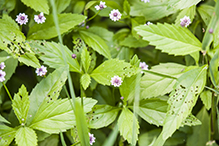 |
|||||
Flower Head |
|||||
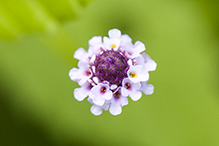 |
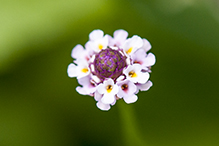 |
||||
Leaves |
|||||
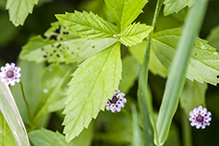 |
|||||

Slideshows |
||

Visitor Videos |
|||
Share your video of this plant. |
|||
| This button not working for you? Simply email us at info@MinnesotaSeasons.com. Attach a video, a YouTube link, or a cloud storage link. |
|||
Other Videos |
|||
| Fogfruit Flower Covariant |
|||
About
Published on May 4, 2014 Capeweed close-up Aquatic Phyla lanceolata Vervain Family Google Nexus 5 Video Capture Test |
|||

Visitor Sightings |
|||||
Report a sighting of this plant. |
|||||
| This button not working for you? Simply email us at info@MinnesotaSeasons.com. Be sure to include a location. |
|||||
|
|||||
MinnesotaSeasons.com Sightings |
|||||

|
Created: Last Updated: © MinnesotaSeasons.com. All rights reserved. |
